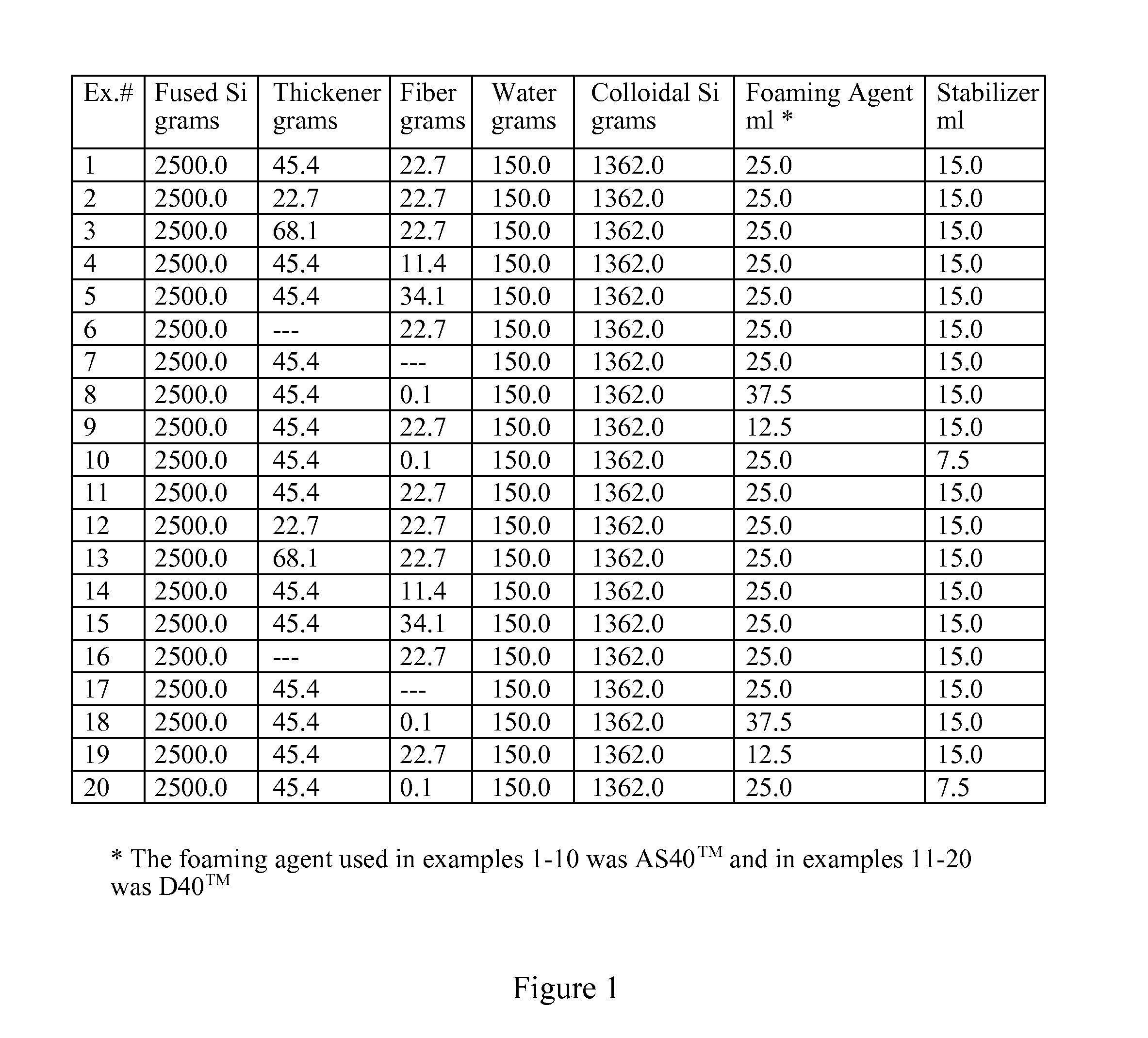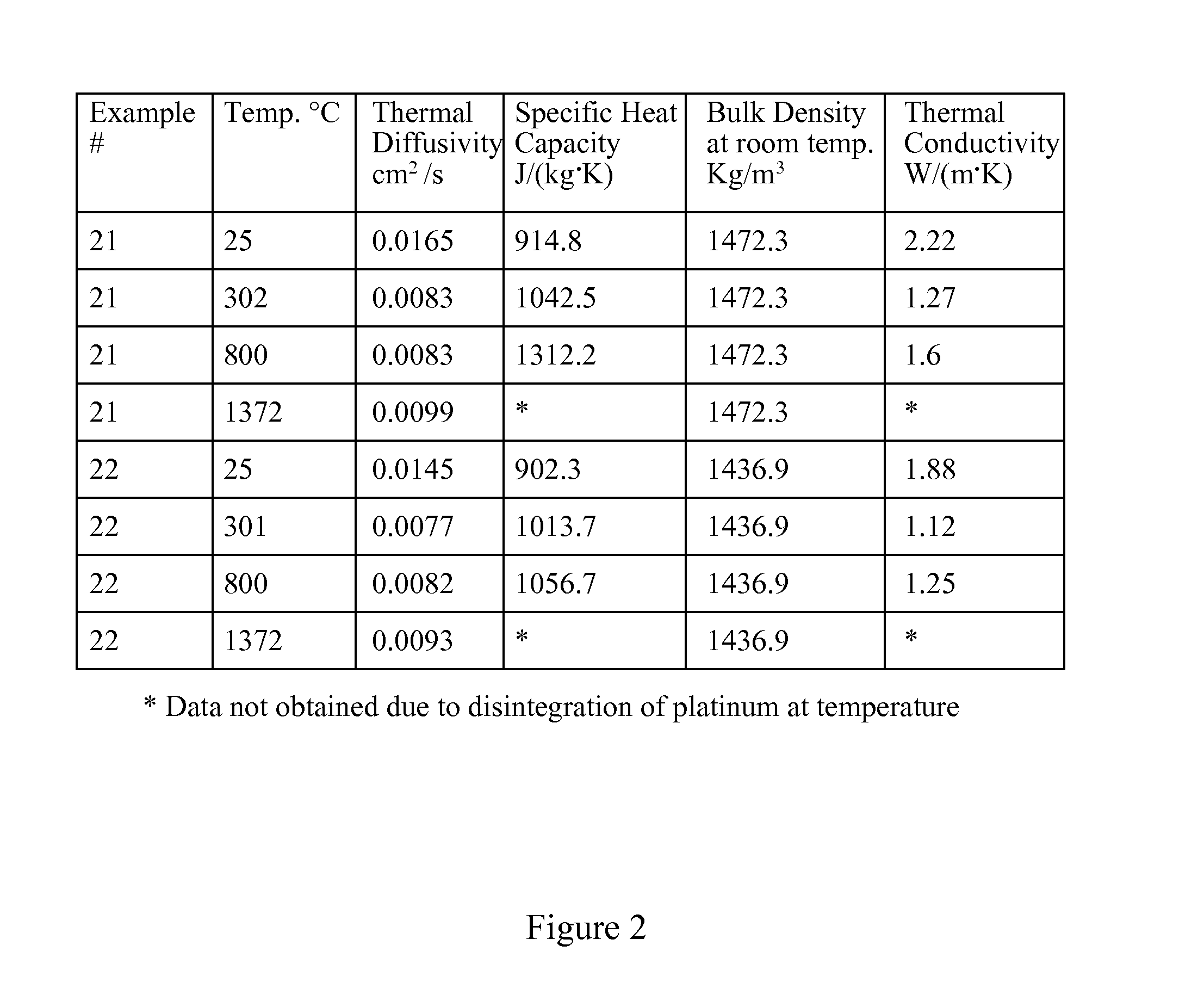Insulated Investment Casting Mold and Method of Making
a technology of investment casting and molds, which is applied in the field of a method of making investment casting shell molds, can solve the problems of affecting the quality of finished metal products
- Summary
- Abstract
- Description
- Claims
- Application Information
AI Technical Summary
Benefits of technology
Problems solved by technology
Method used
Image
Examples
examples
[0026]In order that the present invention may be more fully understood, examples will now be presented describing alternative process steps that have been taken to form the insulated investment casting shell mold and characteristics of the resulting shell molds. It is to be understood that these examples are not to limit the present invention but are given to describe several embodiments of the process of making and the characteristics of embodiments of the shell mold.
examples 1-20
[0027]Insulated investment casting foam slurries were individually prepared with the constituents as shown in FIG. 1 by the following steps:
[0028]1362 grams of colloidal silica were added to a mixing vessel.
[0029]150 ml of water was added to the mixing vessel.
[0030]The mixing vessel was placed in a high shear mixer having a 3 inch high shear mixing propeller.
[0031]The propeller was lowered into the container to within ½ inch of the bottom of the mixing vessel.
[0032]2500 grams of fused silica were added to a dry container.
[0033]An amount of bentonite clay thickener was optionally added to the dry container of the example as indicated in the table of FIG. 1.
[0034]An amount of E385F™ fibers were optionally added to the dry container of the example as indicated in the table of FIG. 1.
[0035]The dry materials in the dry container were poured on top of the liquid materials in the mixing vessel.
[0036]The high shear mixer was turned on to provide approximately 500 rpm to the high shear mixin...
example 21
[0046]A flat shell section was produced by first dipping a wax plate pattern into a slurry having 3711 g of fused silica, 175 g water, 1362 g colloidal silica, and 140 g Minco HP latex. followed by application of Minco 30×50 stucco. The shell mold was then dipped into the slurry and stucco was applied a plurality of times resulting in a coating of approximately 0.5″ in thickness on the wax pattern. The shell mold's edges were ground allowing removal of the shell in plate form from the wax pattern. Thermal diffusivity, specific heat capacity, bulk density, and thermal conductivity were measured at varying temperatures, the results of which appear in the table of FIG. 2. Thermal diffusivity and specific heat capacity tests were performed according to the specifications of ASTM E1461 test method.
PUM
| Property | Measurement | Unit |
|---|---|---|
| temperature | aaaaa | aaaaa |
| length | aaaaa | aaaaa |
| refractory | aaaaa | aaaaa |
Abstract
Description
Claims
Application Information
 Login to View More
Login to View More - R&D
- Intellectual Property
- Life Sciences
- Materials
- Tech Scout
- Unparalleled Data Quality
- Higher Quality Content
- 60% Fewer Hallucinations
Browse by: Latest US Patents, China's latest patents, Technical Efficacy Thesaurus, Application Domain, Technology Topic, Popular Technical Reports.
© 2025 PatSnap. All rights reserved.Legal|Privacy policy|Modern Slavery Act Transparency Statement|Sitemap|About US| Contact US: help@patsnap.com


